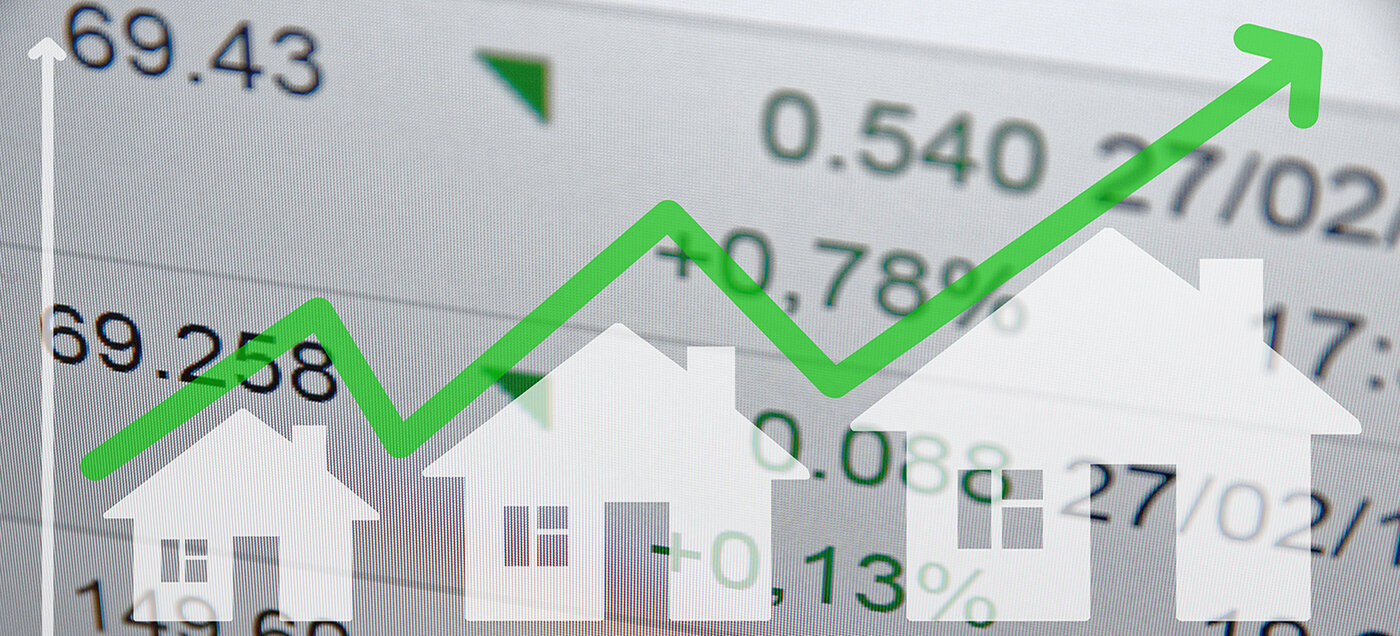Residential Real Estate News

Home Price Gains Recorded in Many U.S. Metros in Mid-2023
Residential News » Tampa Edition | By WPJ Staff | August 11, 2023 7:02 AM ET
Based on new data from the National Association of Realtors' latest quarterly report, almost 60% of U.S. metro markets (128 out of 221) registered home price gains in the second quarter of 2023 as 30-year fixed mortgage rates oscillated between 6.28% and 6.71%. Five percent of the 221 tracked metro areas registered double-digit price increases over the same period, down from seven percent in the first quarter.

"Home sales were down due to higher mortgage rates and limited inventory," said NAR Chief Economist Lawrence Yun. "Affordability challenges are easing due to moderating and, in some cases, falling home prices, while the number of jobs and incomes are increasing."
Compared to a year ago, the national median single-family existing-home price dipped 2.4% to $402,600. In the prior quarter, the year-over-year national median price decreased 0.2%.
"Just like the weather, large local market variations exist despite the minor change in the national home price," Yun added.
Among the major U.S. regions, the South saw the largest share of single-family existing-home sales (46%) in the second quarter, with year-over-year price depreciation of 2.2%. Prices rose 3.2% in the Northeast and 1.4% in the Midwest but retreated 5.8% in the West.
Year-over-year prices in the second quarter declined by 19.1% in Austin, 11.3% in San Francisco, 9.6% in Salt Lake City and 7.4% in Las Vegas.
"Interestingly, price declines occurred in some of the fastest job-creating markets," Yun said. "Prices in these areas are trying to land on better fundamentals after several years of skyrocketing increases. In fact, the number of homes receiving multiple offers, alongside continuing job and wage gains, signal price slides may already be a thing of the past."
The top 10 metro areas with the largest year-over-year price increases all recorded gains of at least 10.4%, with six of those markets in the Midwest. Those include Fond du Lac, Wis. (25.3%); New Bern, N.C. (19.7%); Duluth, Minn.-Wis. (14.6%); Davenport-Moline-Rock Island, Iowa-Ill. (12.6%); Allentown-Bethlehem-Easton, Pa.-N.J. (11.7%); Kingsport-Bristol-Bristol, Tenn.-Va. (11.5%); Peoria, Ill. (11.5%); Green Bay, Wis. (10.9%); Trenton, N.J. (10.5%); and Cape Girardeau, Mo.-Ill. (10.4%).
Seven of the top 10 most expensive markets in the U.S. were in California. Overall, those markets are San Jose-Sunnyvale-Santa Clara, Calif. ($1,800,000; -5.3%); San Francisco-Oakland-Hayward, Calif. ($1,335,000; -11.3%); Anaheim-Santa Ana-Irvine, Calif. ($1,250,000; -3.8%); Urban Honolulu, Hawaii ($1,060,700; -7.4%); San Diego-Carlsbad, Calif. ($942,400; -2.4%); Salinas, Calif. ($915,600; 0.6%); Oxnard-Thousand Oaks-Ventura, Calif. ($904,900; -2.7%); San Luis Obispo-Paso Robles, Calif. ($890,900; -3.2%); Boulder, Colo. ($871,200; -6.7%); and Naples-Immokalee-Marco Island, Fla. ($850,000; unchanged).
About two in five markets (41%; 90 of 221) experienced home price declines in the second quarter, up from 31% in the first quarter.
Housing affordability worsened from the first-to-second quarter due to rising home prices and mortgage rates. The monthly mortgage payment on a typical existing single-family home with a 20% down payment was $2,051, up 10% from the first quarter ($1,864) and 11.6% - or $214 - from one year ago. Families typically spent 27% of their income on mortgage payments, up from 24.5% in the previous quarter and 25.3% one year ago.
Lack of inventory and affordability continued to impact first-time buyers during the second quarter. For a typical starter home valued at $342,200 with a 10% down payment loan, the monthly mortgage payment grew to $2,012, up 9.9% from the previous quarter ($1,830). That was an increase of more than $200, or 11.3%, from one year ago ($1,807). First-time buyers typically spent 40.7% of their family income on mortgage payments, up from 37.1% in the prior quarter.
A family needed a qualifying income of at least $100,000 to afford a 10% down payment mortgage in 40.3% of markets, up from 33% in the prior quarter. Yet, a family needed a qualifying income of less than $50,000 to afford a home in 6.3% of markets, down from 10% in the previous quarter.
Sign Up Free | The WPJ Weekly Newsletter
Relevant real estate news.
Actionable market intelligence.
Right to your inbox every week.
Real Estate Listings Showcase
Related News Stories
Residential Real Estate Headlines
- U.S. New-Home Sales Surge in August as Mortgage Rates Ease
- Despite Increased Foreign Buyer Activity, Miami Residential Sales Dip 11 Percent in August
- California Home Sales Enjoy Modest Uptick as Mortgage Rates Ease
- U.S. Home-Flipping Profits Sink to Lowest Level Since 2008 Financial Crisis as Costs Climb
- Why the World's Rich Are Flocking to Europe in 2025
- Federal Reserve Delivers First Rate Cut of 2025 as Mortgage Relief Proves Limited
- Homebuilder Sentiment Holds Steady in U.S. as Rate-Cut Bets Lift Outlook
- U.S. Mortgage Rates Experience Sharpest Weekly Drop in Over a Year
- U.S. Foreclosures Rise for Sixth Straight Month as Affordability Pressures Mount
- Black U.S. Homeownership Rate Falls to Two-Year Low as Job Losses Mount
- Las Vegas Home Prices Flatten as Listings Surge, Sales Slow
- Cooling Miami Housing Market Sees 16 Percent Annual Sales Drop in July
- U.S. Mortgage Delinquencies Uptick in June Amid Regional Pressures
- California, Florida Top U.S. Housing Markets Most at Risk of Downturn
- 30-Year Mortgage Drops to 6.56 Percent in Late August, Lowest Since October 2024
- Investors Maintain Elevated Role in U.S. Housing Market Despite Slight Pullback
- Pending Home Sales Show Mixed Signals as U.S. Buyers Remain Cautious
- Canadian Home Sales Extend Recovery in July
- U.S. Home Sales Rise in July as Buyers Gain More Bargaining Power
- Zombie Foreclosures Edge Up Across U.S.
- 2.6 Million Homes at Wildfire Risk Across 14 Western States in 2025
- One in Five Americans Willing to Trade Personal Safety for Home Affordability
- U.S. Home Price Growth Slows as Affordability Pressures Mount in 2025
- U.S. Mortgage Rates Dip to Four Month Low in Early August
- U.S. Mortgage Applications Rise in Late July, Breaking Four-Week Slump
- Hong Kong's Housing Market Stuck in Stalemate as Bulls and Bears Face Off
- U.S. Condo Market Struggles in 2025
- U.S. Pending Home Sales Remain Sluggish in June
- Los Angeles Area Wildfires Destroyed Nearly $52 Billion in Homes Last January
- Greater Palm Beach Area Residential Sales Slip in June Amid Growing Inventory
- Economic Resilience Lifts U.S. Housing Outlook Going Forward
- New Home Sales Stagnate as Affordability Struggles Continue in America
- U.S. Housing Market Slips in June as Prices Hit New Highs
- Florida, California Continue to Reign Supreme as America's Ultraluxury Housing Markets
- Caribbean Housing Market Evolves into Global Second-Home Hotspot
- U.S. Home Sales See Highest June Cancellation Rate on Record
- Orlando Housing Market Cools in June as Listings Slide, Sales Slow
- Private Credit Surges in 2025 as Real Estate Developers Bypass Banks
- U.S. Condo Market Suffers Sharpest Price Drops in Over a Decade as Buyers Retreat
- Rising Taxes, Insurance Costs Undermine the Stability of U.S. Homeownership







